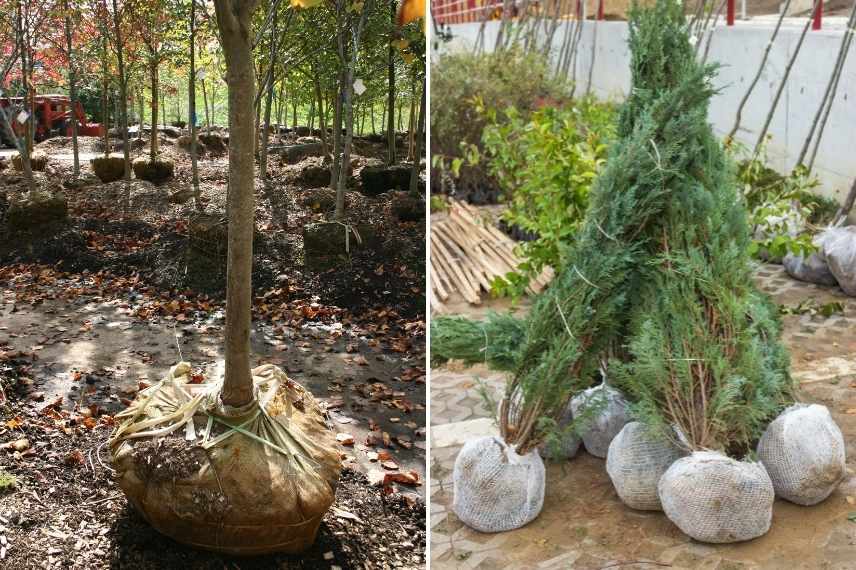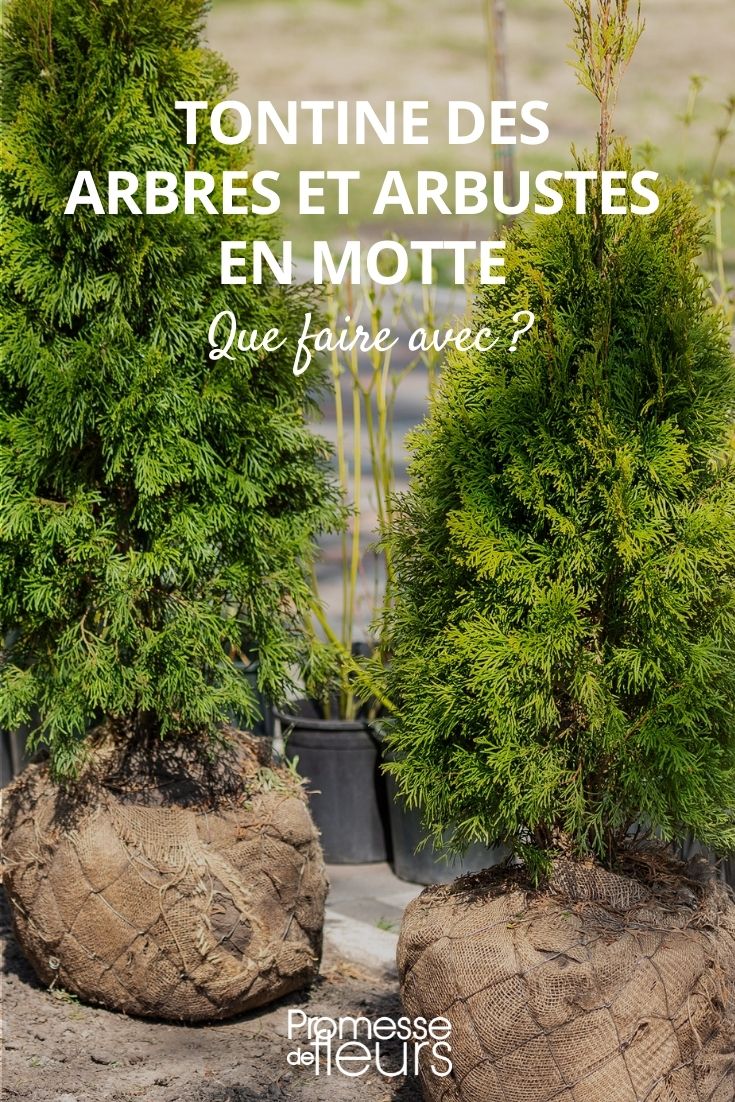
What to do with the clump of trees and bushes?
Do we remove it or leave it?
Contents
Nowadays, trees and bushes in clumps are rarely offered by nurserymen, who prefer container cultivation for various reasons (ease of storage, transport, and handling). However, they can still be found for sale, particularly for conifers and evergreen bushes. In this case, the clump of soil protecting the roots is wrapped in a burlap. But what should be done with this burlap? Should it be removed at planting or, on the contrary, kept?
What is a tontine?
In the field we are interested in, a tontine is a filament designed to hold the soil around the roots of a tree being transplanted. This filament can be made of plastic, cotton, jute… Moreover, the verb “to tontine” is defined as “to surround the roots of a young plant with a tontine“. Feel free to try using it in a conversation!
This tontine is therefore only present for trees, bushes, and fruit trees offered in clumps.
Trees and bushes in clumps are, nowadays, rarely offered by nurserymen, in favour of pot cultivation. However, these are robust plants with a good root system ensuring successful establishment and great vigour. You will find in clumps: conifers, evergreen trees and shrubs for hedges, large specimens, and other species whose establishment is delicate with bare roots (such as Albizia or Mimosa, for example).
 Tontine in jute on clump of conifer
Tontine in jute on clump of conifer
Should we remove the tontine or not?
The question is simple, but the answer is much less so.
It will primarily depend on the material that makes up the wrapping: jute, cotton, plastic, polypropylene, or metal mesh film… The wrapping can be kept if, and only if, it is made from a biodegradable material such as jute or cotton. Otherwise, it should be removed!
The wrapping is there to keep the root ball around the roots of the tree or bush during transport. If the root ball is likely to crumble, it is advisable to keep the wrapping (provided it is indeed biodegradable). However, if the root ball consists of fairly clayey soil, thus well compacted and solid, you can afford to remove the wrapping directly.
At planting, remember to open the wrapping at the closure around the trunk of the tree. Tight jute or cotton at this point can create a bulge or constriction around the trunk during growth.
As you will have understood: whether to keep the wrapping or not depends on the specific case.
 Natural materials like jute can be kept, but synthetic or plastic materials should definitely not be retained…
Natural materials like jute can be kept, but synthetic or plastic materials should definitely not be retained…
How and when to plant a tree or a bush in a clump?
When to plant?
Bushes and trees in clumps are only available for part of the year: approximately between October and April. Just like trees presented with bare roots, plants in clumps should be planted within 2 or 3 days of receipt, outside of frost periods.
How to plant?
- Soak the clump in a basin of water for an hour
- Dig a hole twice as wide as the clump and slightly deeper than it
- Loosen the soil at the bottom of the hole
- Add some compost and well-rotted manure
- Create a small mound with the excavated soil in the centre of the hole and place the clump on it
- Open the collar at the closure around the trunk
- Backfill the hole with the excavated soil
- Firm the soil around the base of the tree or bush with your foot
- Water thoroughly to avoid any potential “air pockets” that may have formed between the soil and the clump.
 The planting hole should be twice as wide as the clump and slightly deeper
The planting hole should be twice as wide as the clump and slightly deeper
- Subscribe!
- Contents
































Comments